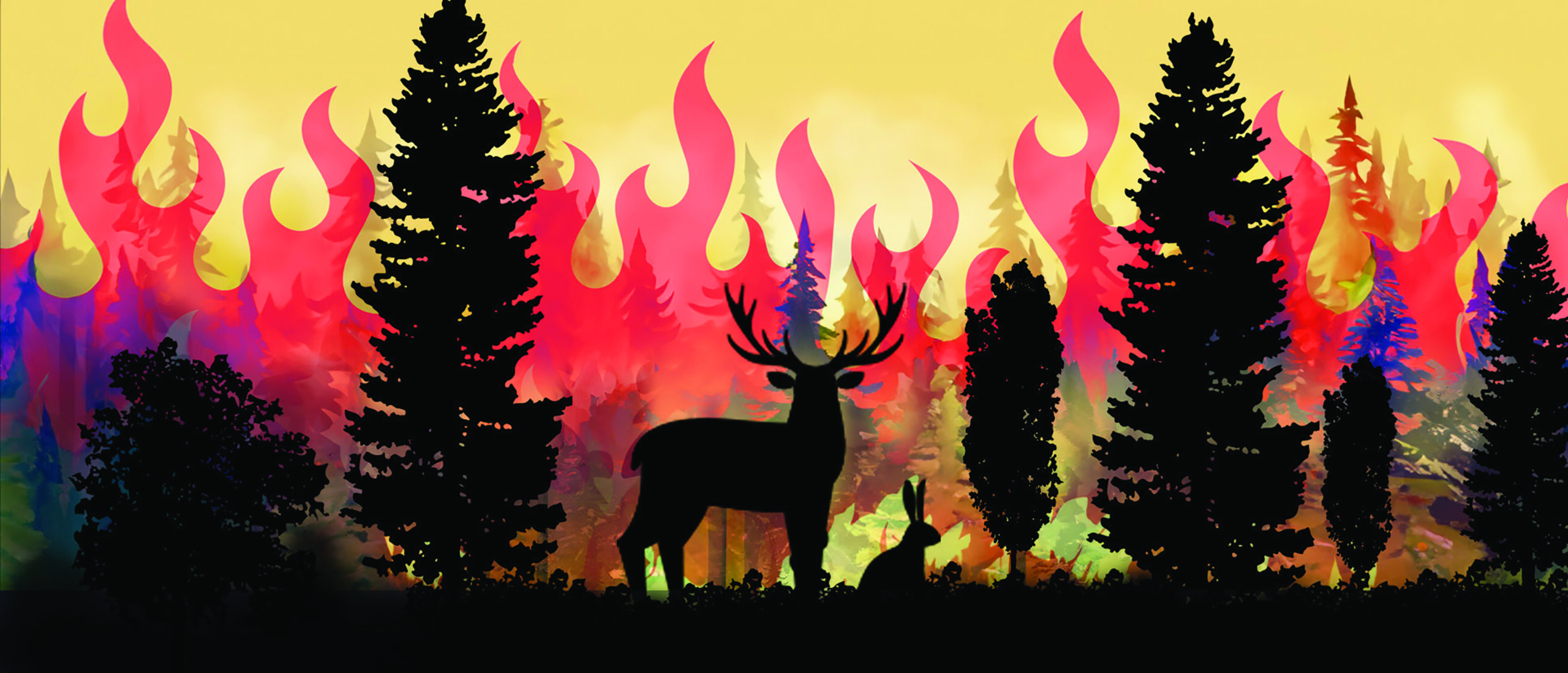A world ablaze: looking back on Canada’s 2024 wildfire season
With more than five million hectares of burned land and nearly one billion in insured losses, Canadians mourn the destruction of its deadliest wildfire seasons yet.
In the past year, Canada has seen one of the most devastating wildfire seasons in the country’s history. According to data from the Canadian Interagency Forest Fire Centre, Canada has seen more than 5,000 wildfires over the 2024 season, with more than 600 active fires as of September 7.
Of those fires, more than 200 are in British Columbia, followed by more than 80 in Alberta and Saskatchewan. So far, Nova Scotia is the only one among the provinces and territories that is not experiencing an active fire. Due to the out-of-control wildfires burning in the province, residents in British Columbia are being warned about the poor air quality caused by the smoke.
To date, over five million hectares of Canadian land have been burned.
Zombie fires
Canada’s 2024 wildfire season sprung back in 2023 since some of the country’s fires survived last year’s winter and reignited early in the 2024 season.
Though Northern fire managers prefer the term “overwintering fires,” many news outlets, including Global News and The Conversation, have classified these fires that smoulder over the winter months under the snow as “zombie fires.” These fires burn underground during the winter months and remain undetected until reemerging in the following spring season.
The escalating hazards and costs of wildfires
Wildfires are rapidly impacting the health of Canadians across the country. Canadians are at risk for facing symptoms and health effects including headaches, mild cough and sinus irritation, dizziness, wheezing, chest pains, asthma attacks, shortness of breath, heart palpitations and in some severe cases, stroke, heart attack and premature death.
According to Environment Canada, “There is no known safe level of exposure for some of these pollutants. This means that smoke can impact your health even at very low levels.” Environment Canada has ranked Calgary, Edmonton, Regina and Saskatoon as being “very high-risk” cities.
The fires are not only impacting Canadians but affecting other countries as well. Smoke from the active fires has drifted all the way to the United States. North Dakota, Kansas, Colorado and Wisconsin have reported smoky skies and poor air quality from the fires.
The destruction from these wildfires has cost Canada hundreds of millions of dollars in insurance losses. The wildfire from Jasper National Park this summer is estimated to have cost the country C$880 million in insured damages, including homes, businesses and vehicles. The destruction in Jasper’s townsite ranked as Canada’s ninth most expensive disaster for insurance payouts.
Of Jasper’s 1,113 buildings, 358 were destroyed by the fire. The wildfire resulted in entire neighbourhoods on the southern side of Jasper being lost and the rebuild is expected to span over years.
On July 25, Jasper Mayor Richard Ireland released a message expressing the town’s collective sorrow. “The destruction and loss that many of you are facing and feeling is beyond description and comprehension; my deepest sympathies go out to each of you.”
News Editor (Volume 51); Associate News Editor (Volume 50) — Samuel is a second-year student at UTM studying Politics and English. He previously worked with The Medium as an Associate News Editor and currently serves as the publication’s News Editor. Samuel is passionate about employing the power of writing to enhance our student community and hopes to help nurture a bright future for The Medium this year. In his spare time, Samuel can be found working out, creating music on the piano and drums, or exploring nature.


